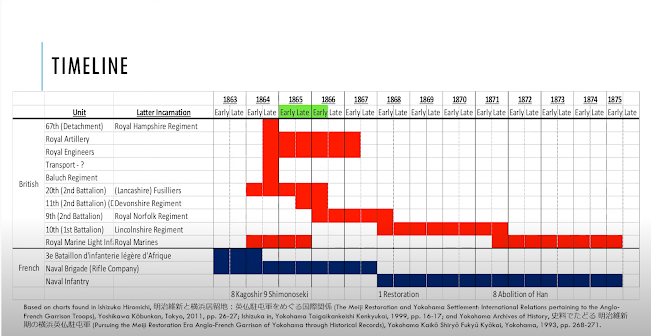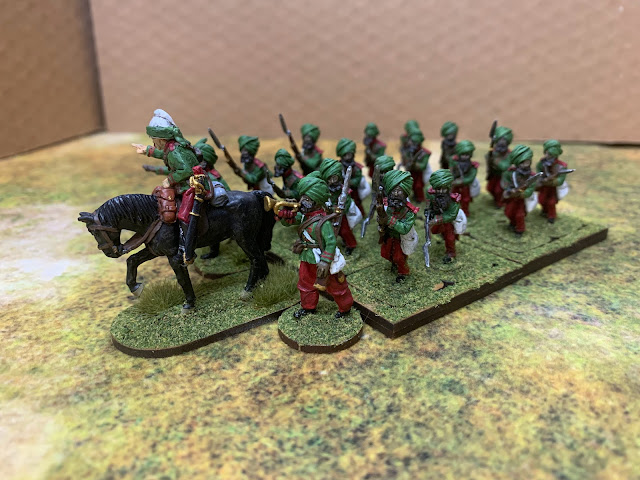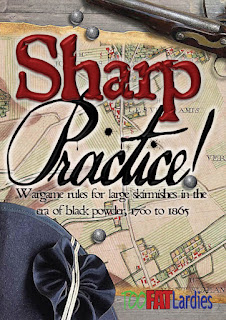The Anglo-Indian Intervention Force in Japan, Part One (Indian Infantry)
For reasons I can no longer really work out, I decided, just as I was starting to build up some decently sized Japanese forces for the 1868-9 Boshin War, that a fun additional project would be doing some British and French expeditionary forces. Should I ever finish the British one, it alone will probably number almost as much as both my Imperial and Shogunate armies put together. Logically of course, that means the latter two ought to be enlarged...
Questionable decisions aside, it's something that I've made fits and starts on in the last year, and that I now feel I ought to make a more determined push on. So, this first post will document the one complete element of these forces so far, that being the Indian infantry, and hopefully that spurs me on to get the rest of these finished in the coming months.
The decision to field Indian troops in this force was made for three reasons. Firstly, why not? Secondly, the hypothetical structure of my expeditionary force was based on a slightly reduced version of the force that made up the British expeditionary force to Peking in 1860, in which each of the four brigades consisted of two British battalions and one Indian. The difference would be that I would have three brigades instead. Thirdly, there were actually Indian troops in Japan for a brief spell in 1864. At the height of the antiforeign crisis during the Chōshū attempt to blockade the Straits of Shimonoseki, two companies of the 29th Bombay Native Infantry (formerly the 2nd Bombay Baluch Regiment) were dispatched to Yokohama to bolster the garrison there, until being withdrawn later that year.
_-_Google_Art_Project.jpg) |
| Felice Beato's photograph of the Yokohama garrison at its peak in 1864; the Baluch companies are just right of the centreline in the foreground. |
 |
| Slide taken from this video by Prof. Thomas French, who has done a number of talks over the last few years about the British garrison at Yokohama: https://www.youtube.com/watch?app=desktop&v=944XNCyF6-U |
That being said, I actually found out about the Baluchis quite late in the process, so these ended up being a 'bonus' battalion alongside the others.
It would be gratifying to say I had a particularly good plan for these, but I really didn't. Each unit consists of 16 men, one British Officer, one Native Officer, one NCO, and one musician, for a total of 20. That gives enough for two Groups for Sharp Practice, but is not quite enough to do two units for TMMWBK. (Oops!)
6th Bengal Native (Light) Infantry
It seems to be somewhat of a received wisdom that the British Indian Army broadly wore khaki uniforms after the uprisings of 1857-8 with scarlet reserved for dress uniforms, but in fact scarlet undress remained common for the Bengal Army outside of the Punjab regiments, which specifically chose drab. The 6th BNLI, formerly the 43rd Light Infantry, were among the non-mutineer regiments, and part of the ordinary Bengal army, hence the red. I didn't have good access to uniform guides for the infantry, so what I did here was relatively speculative based on what I could find of turban and facing colours; I was also faced (throughout) with ambiguity over the use of gilt piping by officers, but decided in favour of it for aesthetics' sake. I am happy to be told I am wrong, but will not be repainting these at this time.
All of the Indians are from Artizan's 2nd Anglo-Afghan War range, but with liberal use of Green Stuff to bulk out the puttees into trousers. The British Officer is from Foundry's Indian Mutiny range, without alteration.
10th Bengal Native Infantry
As with the 6th, the 10th were the descendants of a loyalist regiment, the 65th. There seems to be some ambiguity on the turban which ultimately led me to pick the lengthways white stripes on a red base, but it may be that in this earlier period, they had the same sort of turban as the 6th (yellow stripes on blue base) while having yellow facings. Nevertheless, I picked the red and white for distinctiveness.
Also as with the 6th, the Indians are all converted Artizan figures. The British Officer is from the same pack of Indian Mutiny characters as the one for the 6th, but modified from a spiked cavalry helmet to an air-tube type.
45th (Rattray's Sikh) Bengal Native Infantry
The inclusion of a Sikh regiment seemed warranted, and I very nearly went for the 23rd, a Pioneer regiment. I decided, however, that I didn't feel like doing up a load of tools as part of the conversion process, and, inspired by a rendition of them I saw on Will's Toy Soldier Blog, I instead did up a unit of the 45th based on a photo of them in the Second Anglo-Afghan War, during which they wore field service khaki tunics but kept their dress trousers and turbans. It is at this point that I ought to acknowledge that it was only after I finished the Indian infantry that I discovered that their trousers ought to be very dark blue rather than black, but I thought it was not worth going back over them again at this point.
As with the two Jat regiments above, Native Officers and enlisted men are by Artizan; the British Officer is from Foundry. The NCO comes from the pack of Sikh and Askari NCOs in Foundry's Darkest Africa range, hence the anachronistic Martini.
29th Regiment of Bombay Native Infantry (or 2nd Bombay Baluch Regiment)
As noted, the Baluchis were somewhat of an afterthought and ultimately a bit of a bodge, but I think they came together nicely. The thing that really distinguishes them is of course their green and red kit, which I think adds a nice extra splash of colour.
The men are somewhat modified Sikh Sepoys from Empress' Indian Mutiny range (possibly formerly Iron Duke?), while the command figures are the Jacob's Rifles command pack by Perry – with added trouser legs! I did consider the Foundry Baluchis, but I decided that I wanted a bit more dynamism and figure variety, and that the Empress Sikhs were close enough, if a little more thickly-bearded than Baluchis of the time would have been. (Note that these are specifically IMBC64BNI rather than 5/6/7/21.)
The Full Lineup
What next?
The way I have conceived of these forces, I have decided to divide them into six relatively sensible and manageable chunks, at varying stages of completion. They are arranged here in the order in which I intend to finish them:
- Indian Infantry (complete)
- Naval Forces (mostly complete)
- Artillery (mostly complete)
- British Infantry (1 of 5 battalions complete)
- Cavalry (not started yet)
- Support Figures (a few done)
On that basis, I'd say I'm about half done with all this. What remains to be done are a couple of naval officers, four more units of infantry (totalling 88 men – three units of 24 and one of 16); four units of cavalry (I forget my exact numbers for these but that'll be between 36 and 48 figures); an extra horse artillery crew; and a variety of odd supporting figures. My plan, ideally, is to finish before the end of the year. This should be viable, but I tend to be pretty slow with cavalry, so let's see how it goes. I also feel like I need a few more field-calibre guns (don't ask why but I decided I wanted a huge siege train and sort of forgot the lighter pieces) so that may also impose a delay. But. It is all getting there.












These look fantastic, and that old photo was incredible! I had no idea such a large force of Anglo forces was present in Japan near the Bakumatsu.
ReplyDelete